Outer Space & Universe
Outer Space & Universe
Space, also known as outer space, is the near-vacuum between celestial bodies. It is where everything (all of the planets, stars, galaxies and other objects) is found.
On Earth, space begins at the Kármán line (100 km above sea level). This is where Earth's atmosphere is said to stop and outer space begins. This is not a firm boundary but is a convention used by scientists and diplomats.
Items in space are free to move back and forth; up and down; and left and right. These three dimensions are what make 3D space. Items also move forward through time, which is sometimes called the fourth dimension.
The majority of space contains very little matter and so most of it is a vacuum. Scientists do not know how big space is but we do know that space is extremely big, and is always expanding.
According to the big bang theory, all matter and energy in the Universe was compressed into a very small space. Then it exploded and started expanding. Space is still growing in size today; this means the distance from one galaxy to distant galaxies is getting longer.
Gravity is the force that keeps the Moon in orbit around the Earth and the planets in orbit around the Sun. Gravity can stretch and bend space similar to how a heavy ball placed on a stretched sheet of rubber will cause the rubber to stretch. The scientist who discovered that space can bend is named Albert Einstein. How gravity bends space is part of his theory of general relativity.
Astronauts, Cosmonauts, Taikonauts and Spationauts
An astronaut is any person who is trained by NASA to travel and perform tasks in space. Although the space traveler may not necessarily be a United States citizen, each astronaut does go through a rigorous training regiment by the National Aeronautics and Space Administration. Other space travelers go by other names then astronaut depending on their country of origin.
In the United States, astronaut is derived from the Greek words ástron (star) and nautis (sailor). While, in Russia, a space traveler goes by the name космонавт (English: cosmonaut), which is derived from the Greek words kosmos (universe) and nautis (sailor). Westerners call a space traveler from China a taikonaut, based on the 1998 writings of Chiew Lee Yik and Chen Lan where the term tàikōng (great emptiness), Chinese for “space”. In China, the term yuháng yuán (universe navigator) is used for space traveler.
Only the United States of America (United States), Russia (earlier, the Union of Soviet Socialist Republics), and the People’s Republic of China (China) have sent manned spacecraft into space. Other countries have assisted these countries by sending their own space travelers on space missions. For instance, a French space traveler is called a spationaut (from the French word spationaute), which is derived from the Latin spatium (space) and Greek nautis (sailor). (plural in Greek nautes = sailors)
-
01:40

DARPA Proposes Folding Space Telescope Design | Animation
Added 821 Views / 0 LikesThe Membrane Optical Imager for Real-Time Exploitation (MOIRE) will use lightweight membrane optics instead of large-diameter glass mirrors. This design can reduce building and launch costs, putting more eyes in the sky.
-
01:36

Bright 'St. Thomas' Fireball Captured By 9 All-Sky Cameras
Added 773 Views / 0 Likes7 Western University (Ontario) all-sky cameras and two operated by NASA recorded the fireball over the northern shore of Lake Erie on Mar. 18, 2013. Golf ball or softball-sized fragments may have reach the ground northwest of St. Thomas, Ontario. Read mor
-
01:32

How Urine Is Turned Into Clean Water On Space Station | Video
Added 841 Views / 0 LikesOrbiting JAXA astronaut Koichi Wakata explains how the International Space Station's water recovery system works.
-
02:11

Astrobotic Tests Robots Under Different Gravity | Video
Added 772 Views / 0 LikesRobotic rovers drive differently when under the lower gravity of Mars or the moon. Astrobotic carefully tests its robots under these different gravitational forces.
-
08:21

Russian Soyuz Launches Trio to ISS | Video
Added 724 Views / 0 LikesA nominal night launch, and a smooth ride through 3rd stage engine cut-off, puts Alexander Skvortsov, Oleg Artemyev and Steve Swanson on-track to begin Expedition 39 aboard the International Space Station.
-
03:46
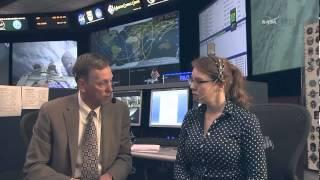
Soyuz Crew Must Take the 'Long Way' to Space Station | Video
Added 857 Views / 0 LikesAfter two successful course altering 'burns' (rocket motor firings) three space-station bound crew members must wait an additional day to finally meet-up with ISS. NASA explains why the Soyuz craft did not execute a planned third burn.
-
00:09
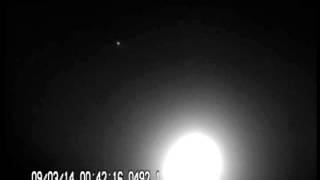
Skywatcher Captures Video Of X-37B Unmanned Military Space Plane | Video
Added 836 Views / 0 LikesSkywatcher Kevin Fetter of Brockville, Ontario in Canada shot this March 9, 2014 video of the U.S. military's X-37B space plane passing by the moon. The robotic US Air Force space plane surpassed 470 days in orbit, an endurance record, in March 2014.
-
01:02
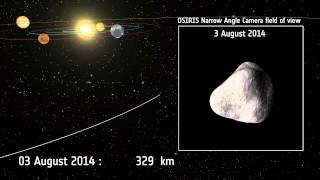
Comet-Chasing Rosetta Spacecraft Approaches Its Target
Added 747 Views / 0 LikesAfter a long hibernation, the European Space Agency's Rosetta spacecraft is catching up with its destination: Comet 67P/Churyumov--Gerasimenko.
-
03:44

A Tetrad Of Lunar Eclipses Starts In April | Video
Added 821 Views / 0 LikesA series of four lunar eclipses spaced 6 months apart will begin on April 15th, and all of the eclipses will be visible for much of the United States.
-
02:03

LIGO, A Passion for Understanding | Indie Film Trailer
Added 723 Views / 0 LikesThe Laser Interferometer Gravitational-Wave Observatory could be as significant an innovation as the telescope. This story of passionate creative researchers striving to understand the fabric of our Universe premieres Tuesday April 15 at Space.com.
-
01:20
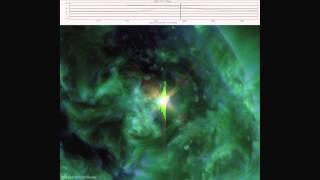
Solar X-Flare Ripples Earth's Magnetic Field | Video
Added 914 Views / 0 LikesAn X1-class flare erupted from sunspot AR2017 on Mar. 29th, 2014. NASA's SDO captured the fireworks and NASA's SOHO captured the resulting coronal mass ejection. A magnetic crochet rippled Earth's magnetic field when the flare was in progress.
-
02:58

Mars Coming Close: Where To Look | Video
Added 772 Views / 0 LikesMars and Earth will only be 92 million miles apart at closest encounter in April 2014, called 'opposition'. Mars will appear red-gold, glowing brighter than first magnitude stars. Only Jupiter, the Moon and Venus before sunrise will be brighter.
-
05:54
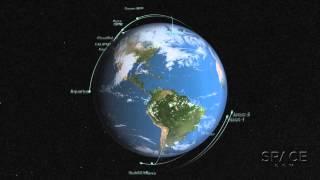
Spring Comes Earlier Due To Warming Earth | Video
Added 806 Views / 0 LikesEven though its been a brutally cold winter for a lot of the United States, the average global temperature continues to rise. NASA climate scientist Dr. Compton Tucker talks to Space.com Tariq Malik about it.
-
02:01

Supernova Survivor: Massive Star Weathers Mega-Blast | Video
Added 756 Views / 0 LikesA close look by NASA's Chandra X-ray Observatory at the debris field of supernova explosion DEM L241 in the Large Magellanic Cloud has revealed a young star tightly orbiting either a tiny neutron star or a black hole. Read more: http://goo.gl/xT14vA
-
01:04

Sun Sticks Out a Tongue of Super-Heated Plasma | Video
Added 768 Views / 0 LikesOn March 31st, 2014, NASA's Solar Dynamics Observatory captured an M1.4-class flare erupting from sunspot AR2014. During the flare, plasma erupted and was sucked backed into the Sun.
-
05:16

Close Mars, Lunar Eclipse And Lyrid Meteors - April 2014 Skywatching Video
Added 917 Views / 0 LikesRed Mars' close encounter with Earth, a 'red moon' total lunar eclipse (visible from North America) and the Lyrid meteor shower will highlight the month of April 2014. Also, the mornings and evenings will showcase Jupiter, Saturn and Venus.
-
03:31

'Bigger Dipper' Scoops Stars and Galaxies In April 2014 Skywatching | Video
Added 825 Views / 0 LikesThe constellations of Ursa Major (the 'Big Dipper') and Leo hold a bevy of skywatching goodness this month. Find out how to see the 'Leo Tripet' of galaxies, plus the double star systems of Mizor and Alcor, and more.
-
02:45

Space Station 'Potty' Swap - Astronaut Demonstrates | Video
Added 829 Views / 0 LikesNASA astronaut Mike Hopkins swaps out the International Space Station's Solid Waste Container SWC/KTO
-
01:18

'Killer' Galaxy Shows Scars, But Companion is Unscathed | Video
Added 772 Views / 0 Likes'Rapacious' Galaxy NGC 1316 has devoured many other galaxies during its violent history. Fossils of this mayhem can be seen in new imagery from ESO's La Silla Observatory. In comparison, galaxy NGC 1317's spiral arms are sound.
-
05:19
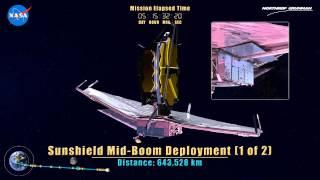
How Hubble Successor Will Spread Its Wings Far From Earth | New Animation
Added 727 Views / 0 LikesThe James Webb Space Telescope (JWST) will travel to Lagrangian Point 2 (L2), 932,000+ miles from Earth. In comparison, the Hubble Space Telescope orbits only 347 miles up. (Read more about JWST)
